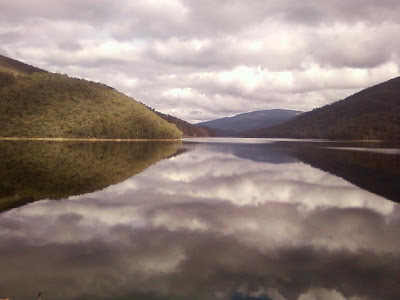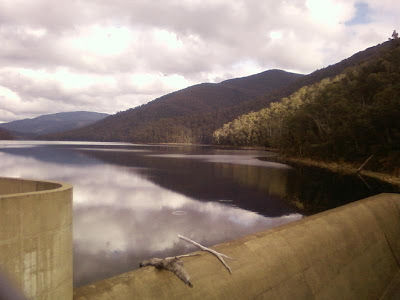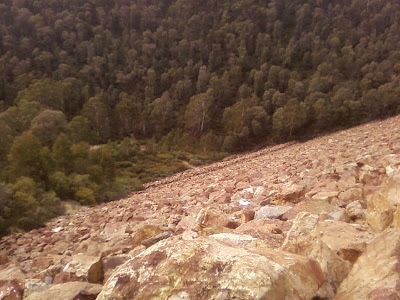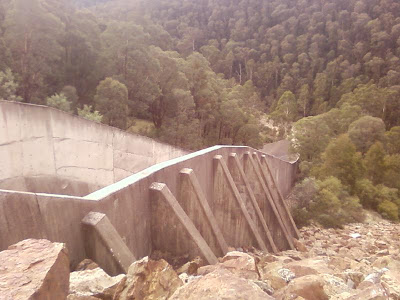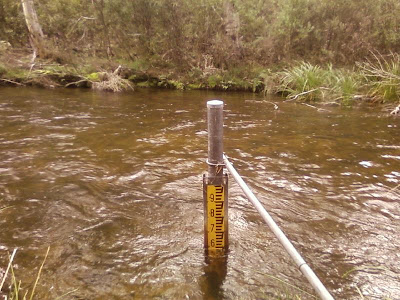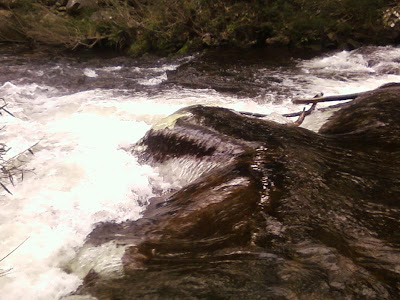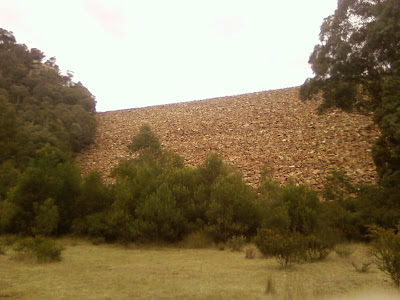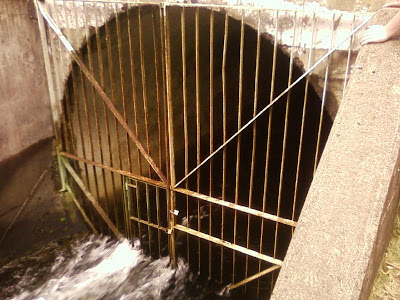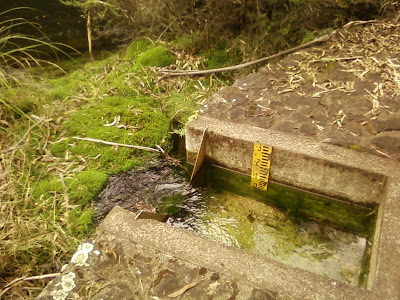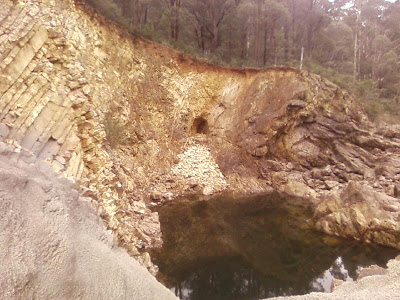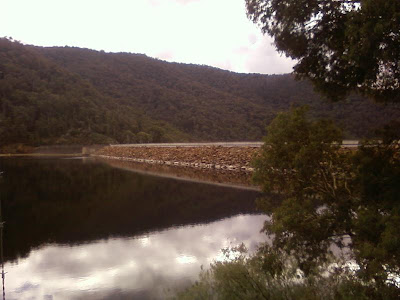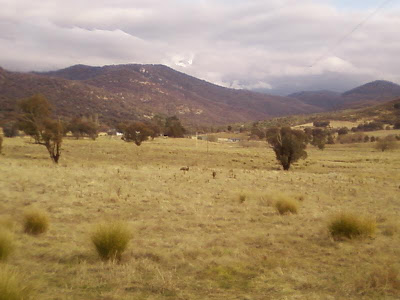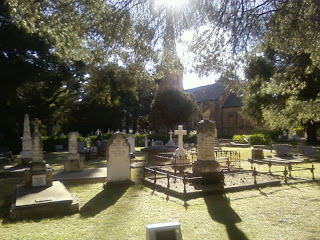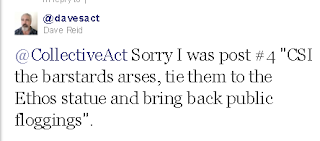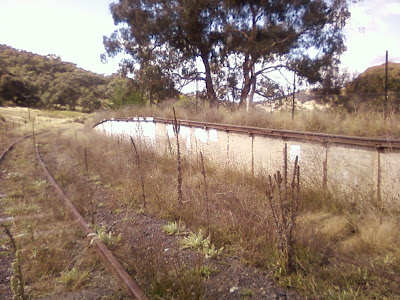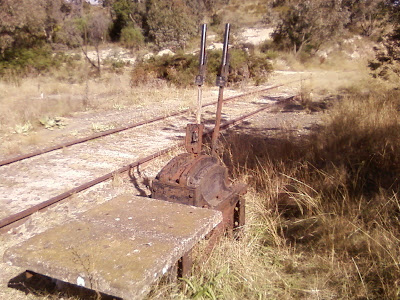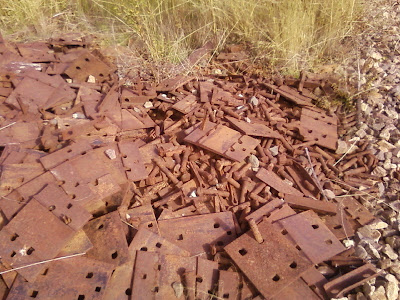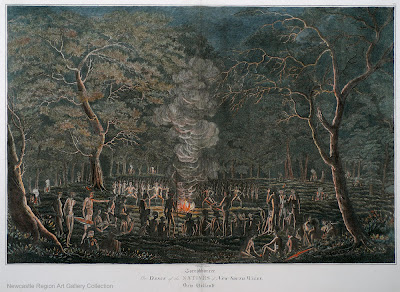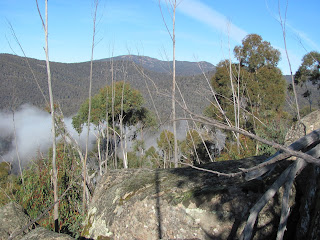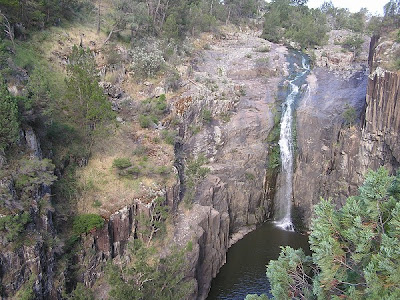Unfortunately it is becoming far too frequent for me to have to witness another mindless destruction of a heritage site in the ACT. Only recently we lost the 1840's
Lanyon barn to arson and now I am very sad to report the wanton destruction of 19th century headstones at
Canberra's first church, St John's Anglican in the inner suburb of Reid in Canberra. I don't have any photographs of the damage but the links below have adequate representations. Newspapers ran the following headlines...
The Herald Sun - 'Headstones smashed at historic church' , The ABC - 'Vandals destroy historic headstones'
and The Canberra Times - 'Graveyard vandals wreak midnight mayhem'.
Local shock, anger and condemnation quickly propagated on the popular Canberra news forum the RiotACT which quickly reported the destruction and followed by a police call for witnesses. A very rare event for me I posted a comment to the site that in hindsight could have been clouded by a bit of anger on my part... After venting my spleen on the site I posted to Twitter that I had vented... someone asked what...
I later posted a saner comment...
This extreme case of heritage vandalism should I think be viewed as a cultural wake up call for Canberra. Long have our heritage assets been left 'unprotected' because we have not faced the need before. Times are obviously changing. Where we once enjoyed the (mostly un-utilised) ability to gain access to important sites closely linked to the pioneer era whenever we wanted we now in some ways need these heritage sites to be protected from ourselves.
For example there are three cemeteries with burials from the 1840's to the 1880's located in the ACT with one cemetery of a design unique in the world. The
Weetangera cemetery (and
here), the
Lanyon cemetery and the
De salis cemetery (and
here) at Cuppacumbalong have headstones linked to the pioneer's stories from the Canberra area's colonial beginnings. The cemetery at Cuppacumbalong is an ingenious oval raised mound supported by stone walls designed to prevent the Murrumbidgee River from washing away burials.
To be perfectly honest I am surprised St John's churchyard wasn't secured at night and have adequate fencing. The time has come if Canberra wants to retain these historically significant pioneer cemeteries to build some appropriate fences (thinking sympathetic wrought iron) with opening times dictated by relevant stakeholder organisations or failing that ACT Museums and Galleries. I know the Anglican Church has a party that helps keep the grass down Weetangera at least.
During my Twitter rampage today I also felt compelled to remind our Minister for such things Simon Corbell that perhaps we should look at fencing the remaining cemeteries headstones before they are targeted in the future. I am not expecting a reply but hope he looks at the links for an appreciation of what he is dealing with and needs to look at aiming to protect...
As we approach our political centenary in 2013 perhaps we should be being a little more mindful of the handful (and dwindling) pre federation Canberra historical treasures we have left. It would be nice to think the generation approaching 2113 might be left our legacy and still have a rich tangible heritage to enjoy.
There is more Canberra history in that old church than you can poke a stick at. I'll leave you with a newspaper clipping describing an
1841 time-capsule behind the churches stone walls...
UPDATE - 25th May.
Not that it had any bearing on my tweet Simon Corbell announced today on Twitter that the Government will give $20,000 to the restoration. I think this amounts to the total damage estimate.
Swift, generous and appropriate. Well done Simon...
View Larger Map
Share -



